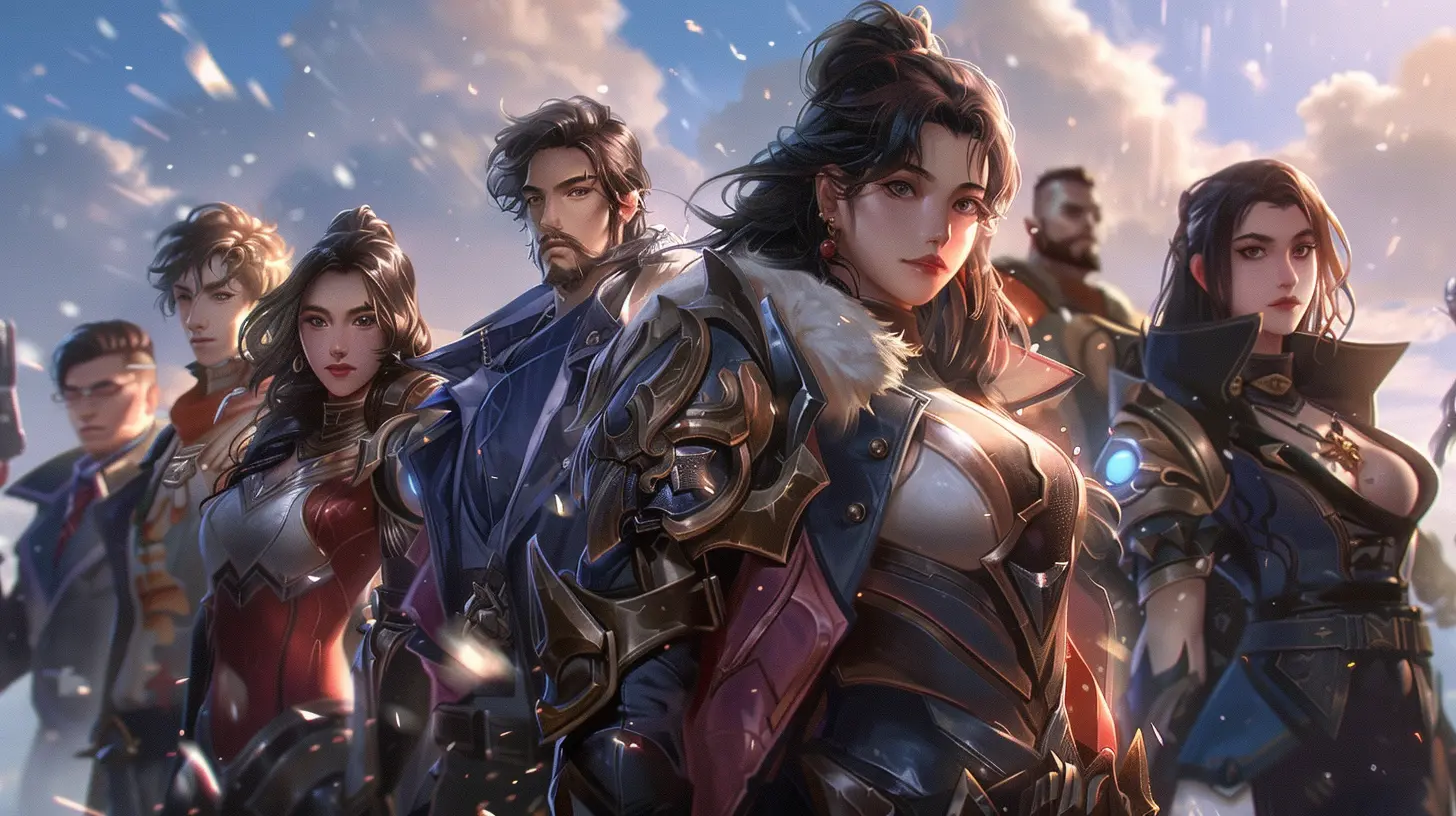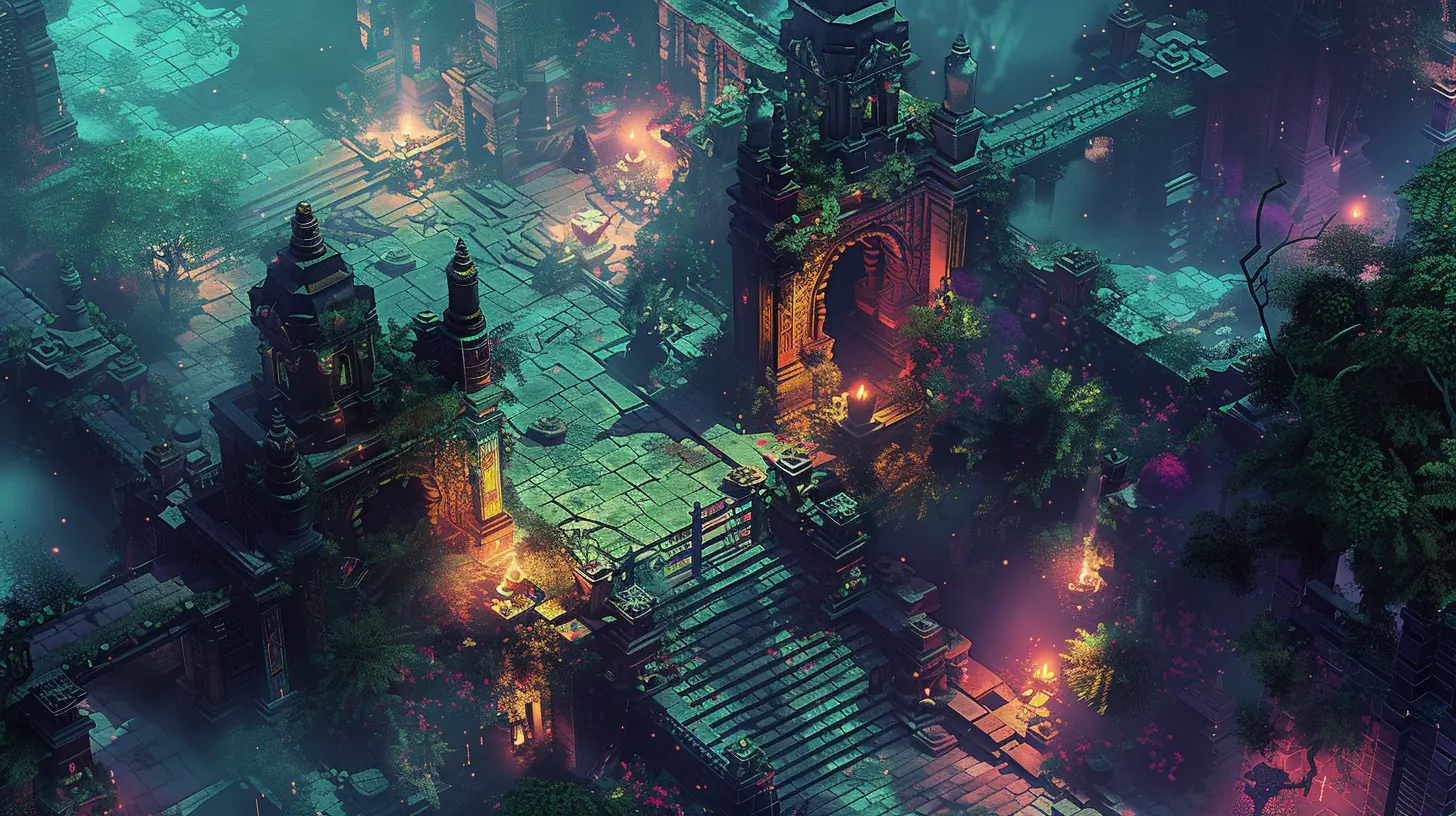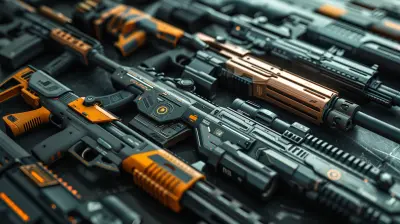Crafting the Ultimate Strategy in Cross-Platform Team-Based Games
26 April 2025
Gaming isn’t just gaming anymore, is it? Cross-platform team-based games have taken things to a whole new level. You’re not just playing to win now; you’re playing to conquer worlds with squadmates who could literally be on the opposite side of the globe—on a PC, console, or even a mobile device. The stakes are high, and if you want to dominate, you’ve got to bring your A-game. That’s where strategy comes into play.
But let’s be real for a second: crafting the ultimate strategy in cross-platform games isn’t just about being "good." It’s about outsmarting your opponents, syncing up with your team, and making sure you’re not the weak link dragging everyone down. So buckle up; we’re diving deep into what it takes to crush it in these games.

Why Strategy Matters More Than Ever
Cross-platform team-based games are a melting pot of chaos. Picture this: you’ve got a PC player with pinpoint mouse accuracy, a console gamer with aim assist, and a mobile player relying on touch controls—all in the same match. It’s like throwing a chef, a home cook, and a ramen enthusiast into a kitchen and asking them to make a five-star meal together.Without a solid strategy, you’re basically signing up for a disaster. Why? Teams win games, not lone wolves. Even if you’re a walking highlight reel, you won’t last long if your squad is a mess. Strategy bridges the gap between individual skill levels, platforms, and playstyles, making it the keystone of any successful team. 
Core Elements of a Winning Strategy
So what separates the champs from the chumps? A killer strategy involves these core elements: communication, adaptability, synergy, and map awareness. Let’s break these down, shall we?1. Communication: The Glue That Holds It All Together
If you’re not talking, what are you even doing? Communication is the backbone of any solid strategy in team-based games. And no, I’m not just talking about shouting “HE’S ONE SHOT!” into your mic.Effective communication means calling out enemy positions, coordinating attacks, and sharing resources with your team. Get on voice chat if you can—text chat is fine, but it’s slower than a turtle on a treadmill.
Pro Tip: Create shorthand phrases your team can all understand. Think, “Enemy top left,” “Flanking right,” or “Need heals!” Make it simple; think of it as your squad’s secret language.
2. Adaptability: Evolve or Get Wiped
You know what they say: no plan survives first contact with the enemy. This couldn’t be truer in cross-platform games.Your opponents will adapt, so you need to, too. Maybe the enemy team has a sniper who’s straight-up dominating your squad. What do you do? Shift your strategy. Send someone to flank them, switch to a long-range character, or bait them into close quarters where they’re less effective.
Adaptability also means understanding your teammates’ strengths. Got someone on mobile who can’t react as fast? Don’t put them in the thick of it. Instead, let them focus on support roles like healing or scouting.
3. Synergy: Play to Everyone’s Strengths
We’re talking peanut butter-and-jelly levels of teamwork here. Your squad has to complement each other. If everyone’s off doing their own thing, you might as well hand the enemy team the win on a silver platter.Look at your game’s meta (most effective tactics available). Does your game favor aggressive rushes or defensive setups? Build your team around that. For example, if you’re playing a hero shooter and someone picks a tank, pair them with a healer and damage dealer for maximum effectiveness.
And hey, don’t be that guy who refuses to switch characters. Play what the team needs, not what strokes your ego.
4. Map Awareness: Know Your Battlefield
Would you run into a jungle without a clue where the traps are? (If your answer is yes, we need to have a talk.)Map awareness is key in cross-platform team games. Know the chokepoints, hiding spots, and high ground areas. High ground, by the way, is criminally underrated. You’ll have better visibility and can catch enemies off guard.
Always keep an eye on objectives. It’s easy to get tunnel vision and focus on racking up kills, but objectives win games. A great map strategist will know when to push, when to defend, and when to retreat. 
The Cross-Platform Difference: What You Need to Know
Cross-platform gaming introduces unique challenges. Different platforms will inevitably have their own advantages and disadvantages. A PC gamer might have an edge in precision, but a console player often benefits from aim assist. Mobile gamers? They’re the wild card—they could be struggling with controls or dominating because the matchmaking underestimates them.Level the Playing Field
To craft a strategy that works across platforms, you’ve got to account for these disparities. For example:- If you’re on PC, take long-range roles where aim matters the most.
- Console players should focus on versatility and roles that thrive in medium-range combat.
- Mobile players might be better suited for support roles where they can focus on positioning instead of precise aiming.
Cross-Platform Communication Tools
Not every platform has built-in voice communication, so make sure your squad knows which third-party tools to use. Discord is your best friend here—it’s like the Swiss Army knife of gaming communication.
Building the Perfect Team Composition
Let’s get one thing straight: there’s no one-size-fits-all team comp. But there are some principles you can follow to build a balanced team:- Offense: You need at least one player who can deal consistent damage.
- Defense: A tanky character who can soak up hits and block enemy advances is crucial.
- Support: Healers or utility characters can turn the tide of battle, especially in close games.
- Flex: Someone adaptable who can fill any role as needed.
Remember, synergy over ego. If your team already has three damage dealers, don’t be the fourth. Think of team composition like making a smoothie—you need the right blend of ingredients, not just all the sweet stuff.
Game-Specific Strategies That Win
Hero Shooters (e.g., Overwatch, Paladins)
In games where you pick characters with unique abilities, your strategy should revolve around those powers. Focus on counter-picking enemy heroes and building combos. For instance, pair a crowd control ability with an AoE damage ultimate to wipe the enemy team.Battle Royales (e.g., Fortnite, Warzone)
Positioning is everything. Always aim for the high ground, and never engage unless you’ve got the advantage. If you’re in a squad, focus on sticking together and prioritizing opponents targeting your teammates. A lone wolf is a dead wolf.Mobas (e.g., League of Legends, Smite)
MOBAs require constant map awareness and objective management. Always keep an eye on the mini-map, and be quick to respond to enemy movements. Pinging the map can be a lifesaver for cross-platform teams that lack voice comms.The Mental Game: Stay Cool Under Pressure
Here’s a little secret—half the battle is mental. If you tilt (lose your cool), you’re toast. Cross-platform games can be frustrating, especially when you feel like one platform has an edge. But instead of blaming the game, focus on what you can control.Take a deep breath, analyze what’s going wrong, and make adjustments. Remember, even pros lose games. What matters is how you bounce back.
Final Thoughts: Outplay, Outthink, Outlast
Crafting the ultimate strategy in cross-platform team-based games isn’t rocket science, but it does take effort. Communicate like a team of spies planning a heist, adapt like a chameleon, and play to your squad’s strengths. Know the maps, understand the platforms, and most importantly, have fun. Yeah, winning is great, but a well-coordinated match feels fantastic—even if you’re on the losing side.So grab your squad, hit the battlefield, and show ‘em why you’re a force to be reckoned with. Because at the end of the day, it’s not just about playing the game; it's about playing it smarter than anyone else.
all images in this post were generated using AI tools
Category:
Cross Platform GamesAuthor:

Aurora Sharpe
Discussion
rate this article
4 comments
Selah McElhinney
Great insights on strategy! The emphasis on communication and adaptability across platforms truly highlights the essence of teamwork in these games.
May 14, 2025 at 3:17 PM

Aurora Sharpe
Thank you! I'm glad you found the insights valuable. Effective communication and adaptability are indeed vital for success in team-based gameplay.
Theodora McMaster
Great insights! Can't wait to implement these strategies with my team in our next game!
May 10, 2025 at 2:33 PM

Aurora Sharpe
Thank you! Excited to hear you’ll be putting these strategies into action. Best of luck in your next game!
Abigail McManus
Great insights! Excited to level up my strategy!
May 3, 2025 at 3:06 AM

Aurora Sharpe
Thank you! I'm glad you found it helpful—best of luck with your strategy!
Trixie Wade
Great insights! I appreciate the emphasis on teamwork and communication in crafting strategies. Looking forward to applying these tips in my next game!
April 27, 2025 at 3:12 AM

Aurora Sharpe
Thank you! I’m glad you found the insights helpful. Best of luck in your next game!


